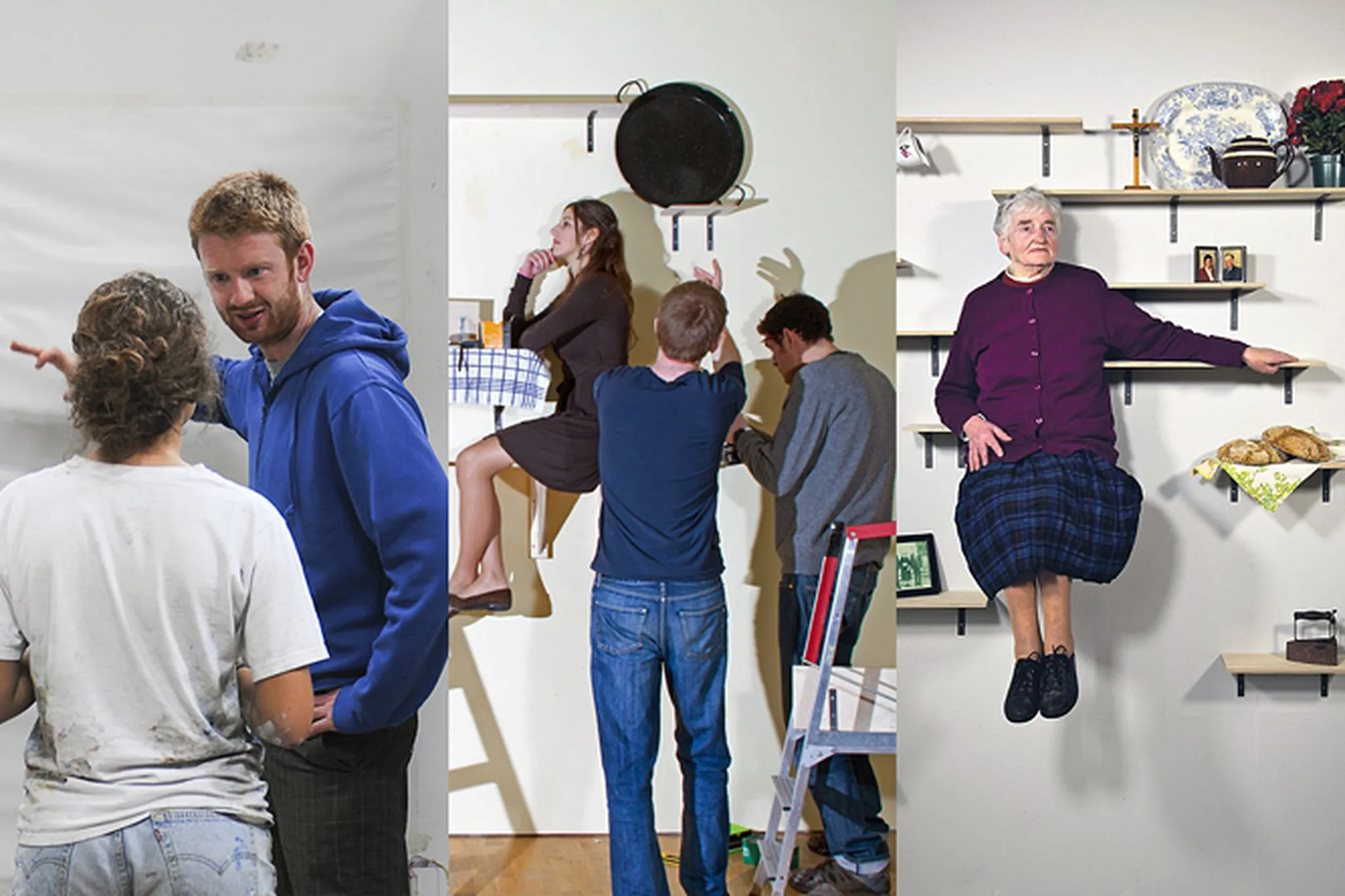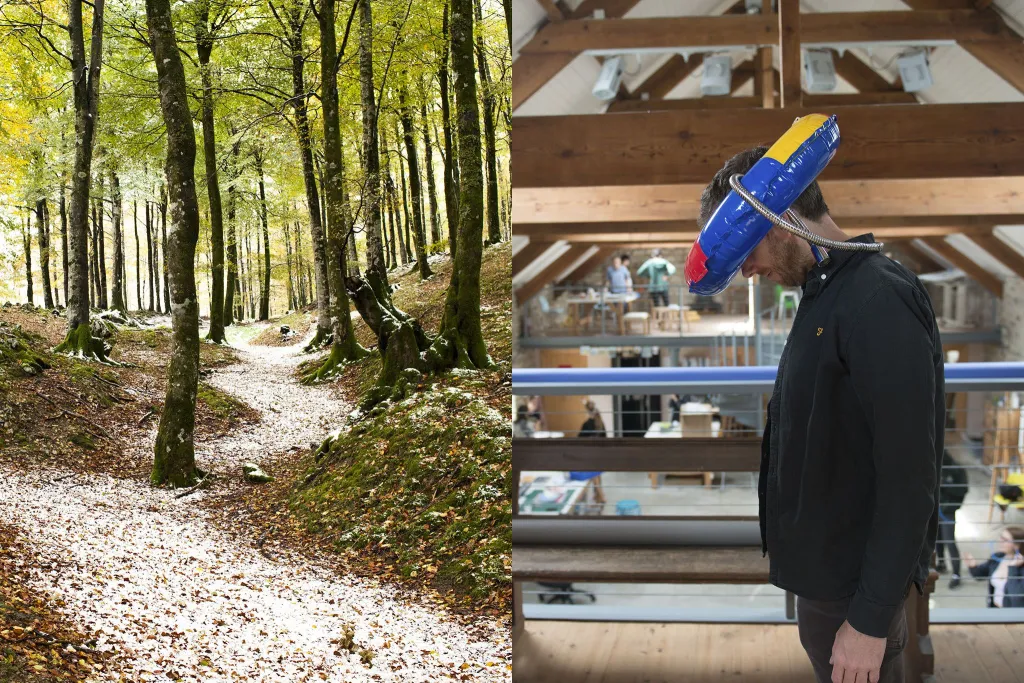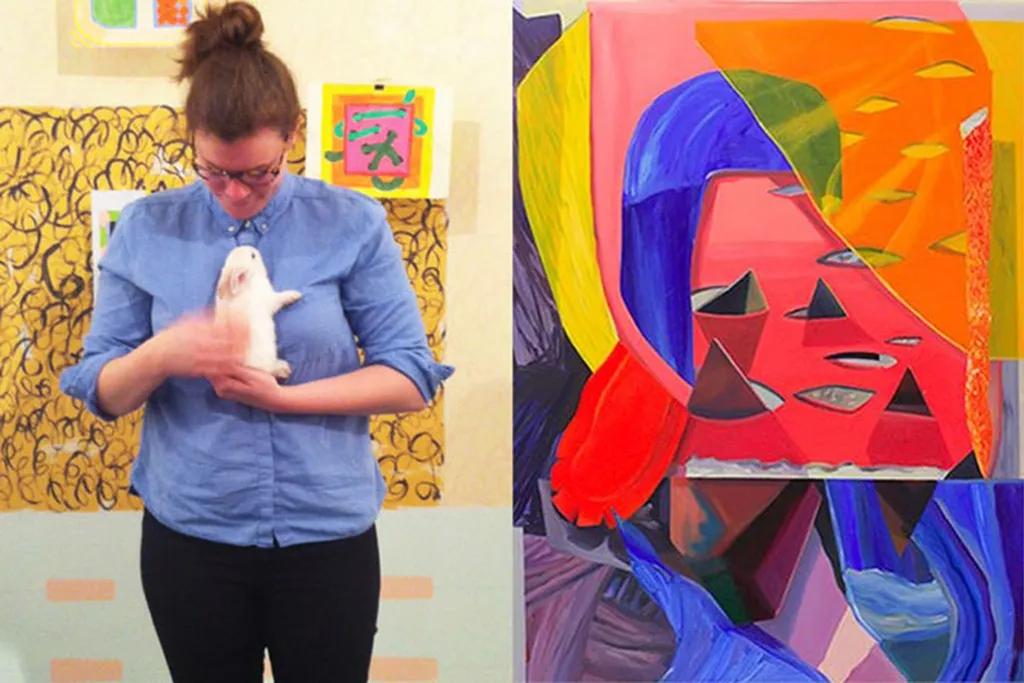Darragh Casey

Darragh was a visiting artist in the summer 0f 2009. Based in London, his practice continually seeks ways of challenging our habits, norms and routines. Originally from Cork, Darragh graduated from NCAD Dublin with a BA in Art & Design Education. After developing a practice as both an artist and educator he completed an MA Design (furniture) from Central St. Martin’s , London in 2012.
His MA project Shelving the Body was immediately recognised for its alternative design thinking and striking imagery. This project addresses the typology of the shelf with a physical consideration for the figure, subverting our relationships with furniture and reassessing the idea of the ‘user’. Darragh also works on freelance design consultancy projects, educational workshops, and installations. His clients to date include Harley St Clinic, Camper Shoes, Central St Martin’s, Vogue UK and Van Cleef & Arpels as well as private clients.
He is currently preparing to publish his book Shelving the Body as an archive of the project.
www.darraghcaseydesign.com
www.shelfportraitproject.com
CHS: What have you been working on most recently? Can you describe a bit about your process and the themes you’ve been exploring?
DC: Recently I have been working in Central St Martin’s and collaborating with a publishing company to create a book about my MA project, Shelving the Body. This book is intended to be an archive of my four series of shelf portraits along with work in progress imagery. It will also include texts from my MA tutors, my course director, my brother, clients and myself. We have just finished the final photo shoot for this book. I have also been working with an art school in Barcelona, Estudio Nomada over the summer doing workshops, developing new ideas and topping up my tan!
My MA project explored themes around how we engage with furniture, the role of furniture in relation to its user and teasing with the idea of the ‘target user’. (a term I dislike!) I was fortunate that Shelving the Body has allowed me to develop a reputation as an alternative design thinker. However, my next stage is to continue to explore and expand these themes beyond the typology of the shelf.
I have developed a process that simply involves creating and identifying – the buzz word is ‘post-rationalisation’. I have always made things without fully realising the significance or relevance of the work until it is made. I have learned that this approach is a natural way of working for me. The challenge is in identifying what works, what is of value and being able to discard what doesn’t. This is often not as easy as it seems. In the army, my process would be like a ground troop with a machine gun, as opposed to a sniper with a rifle. Instead of waiting for the ‘right’ idea, I develop many ‘not quite’ possibilities and hope that I’ll stumble on one unique outcome. Also for me, a certain amount of restriction tends to deliver more creative outcomes – this is why I focused in on the shelf early. It would also explain why I have a strange fascination to see how I would cope with being stranded on a desert island for a while!
CHS: What is your most vivid memory from your summer teaching here at Cow House? How did the experience inform you as an artist & teacher?
DC: Mary’s banana bread, Frankie’s risotto, Rosie’s enthusiasm, Michael’s pond, and of course Chester.
I loved the 1 minute sculpture project inspired by Erwin Wurm. I find this approach fun but also very helpful at generating ideas and removing barriers and mental blocks. Projects like this remind me that I create because I love to but at times we overlook this when there are deadlines and results expected.
My experience with the Cow House made me realise that there should not be a clear distinction between teacher, practitioner and student. As a teacher I don’t have all the answers (and I don’t expect to) but as a practitioner I empathise with students and support them in finding the right approach for themselves. I learn as much as my students from the classes I teach.
CHS: Was there a single class or professor at Central Saint Martin’s that had a profound impact on you as an artist or individual?
DC: My MA in design was a ‘by project’ course, which meant that much of our time was self directed as opposed to lesson based. You were required to seek out expertise as you needed it both inside and outside the college.
I was very influenced by the technical staff in the university, their openness to new possibilities and their ability to make anything happen. However Simon Fraser, my course director had one of the greatest impact on my development while in CSM. His dynamic personality and vision of design fostered the designer I was rather than become the designer I felt I had to be. He challenged and provoked me every step of the way. He had a great skill to look inside a project and identify the essence of the work.
CHS: You just recently graduated. What are your aspirations for the coming year?
DC: As mentioned I hope to publish my book, Shelving the Body. This is a way of me concluding a project and opening a void to expand my practice further and revisit some areas more thoroughly. Whether this exploration results in product based work, collaborations or installations is too early to speculate but will be fun to see!
In November, I am taking part in an exhibition in Sofia, Bulgaria as part of the YICCA open contest. This is a great opportunity for me to show me work further afield in Europe and work on my Bulgarian (or at least start!)
I am also planning some fun and exciting workshops in Barcelona, London and maybe return to the Cow House for a while! Alongside a colleague I have written a short course Creative Repair – Upcycling Furniture that we will teach in Central St Martin’s next year. This course will celebrate repair and emphasise it rather than seeing it as something to conceal.
CHS: Your own work explores the intersection of fine art and craft. What fascinates you most about the physicality of your practice?
DC: I am very involved in the physical making aspect of my practice. I spend a lot of time in metal and wood works in Central St Martins and most of my ideas are generated and nurtured here. I can make an idea more accurately than I can actually draw or verbalise it.
The process of making and experimenting not only tests notions and raises possibilities but it also offers a funny sort of therapy for me, where I become engrossed in a process and detached from the world around me. The physical aspect of my practice demands more time. For instance, it generally takes more time to make a chair than it does to draw one. This extra time is taken up with tasks such as cutting, measuring, testing, constructing and gives me respite from the conceptual aspect of my project. When this happens I feel at my most creative. For instance at the start of my MA I was backed up with ideas and I decided to bang them out as cardboard models. I spent 2 weeks constructing over 50 cardboard models for the Shelving the Body project. I became so engrossed in the process I felt the possibilities were limitless. After this I sat down and analysed what I had done, what is working and why this work and that doesn’t.


